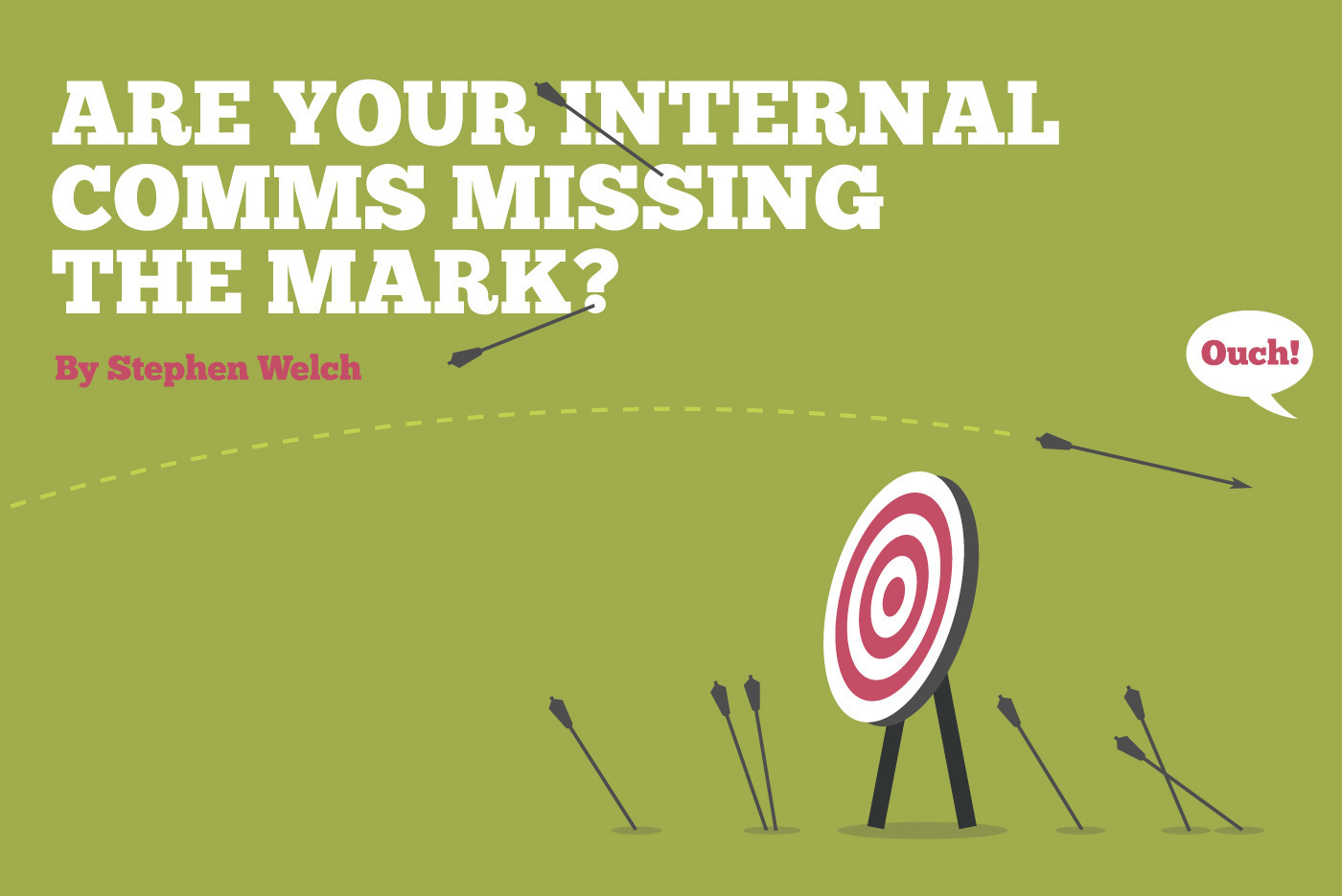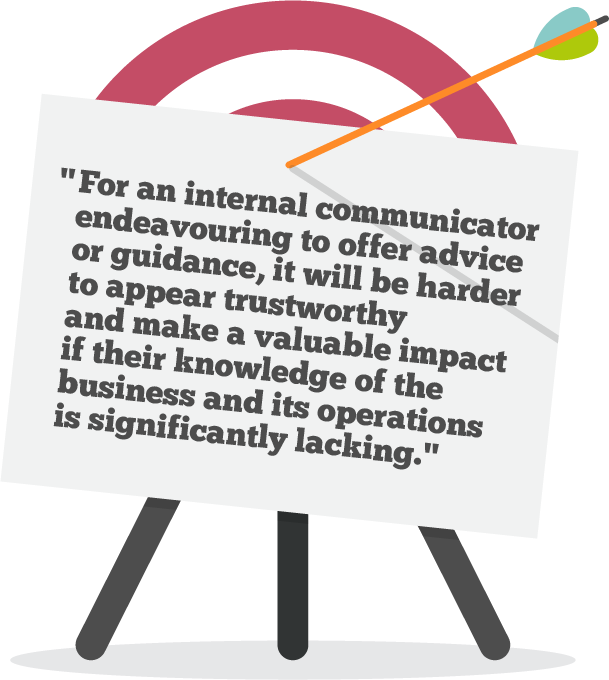
Internal comms and HR expert Stephen Welch joins the H&H blog to share his thoughts on the 11 ways internal communicators can miss the mark when it comes to devising great communications – and offers valuable advice on how to avoid these damaging mistakes.
There are a lot of blog posts available on how to be successful in internal communications, from posts on how to implement social media campaigns to articles on how to write effectively and compellingly. I even wrote a series for a magazine on how to become a trusted internal comms advisor.
But this post is a little different: it is about how to fail.
Yes, that’s right: I’m going to talk about how you can get communication totally wrong, and deliver drastic underperformance for your organisation.
So, why should you read this post? Well, I’m sure you don’t want your organisation to fail. By brushing up on these 11 damaging internal comms mistakes, you’ll be able to diagnose any IC challenges you might have in your organisation, and put steps in place to overcome them. Millions are invested every year in internal communication, so how do you make sure it doesn’t go to waste?
Before we start, a note on the research behind this article. In 2014 and 2016, I undertook a study into how internal comms most commonly fail, with Michael Ambjorn of Align Your Org. It covers over 100 companies across 10 countries, with approximately 1,000,000 employees in total. We are hoping to update the research in 2018, so if you’d like to get involved please do get in touch.
Let’s dive in.
Here are the 11 ways IC professionals can drastically miss the mark with their internal comms…
1. Too many messages
According to our research, average-performing organisations are 40% more likely to pack a lot of messages into their communications. On the other hand, high-performing organisations are much more judicious with their internal comms. Do you filter and focus your messages on what is really important? Or is logorrhoea the name of the game?
2. Comms monologues – ‘it’s all about me’
Whereas average organisations like to talk about themselves at length, high-performance organisations are more balanced, and better at listening and using two-way channels. It is about dialogue, not monologue. How much do you talk about yourself, rather than listening to others?


3. Jargon-galore
Only 53% of internal communicators admit to keeping their language simple and jargon-free. Top-performing IC professionals are better at simplifying their messages and keeping them clear and concise. Does jargon slip through your net? If so, will your employees really understand it?
Key takeaway – keep things simple, focused, and jargon-free.
4. Lack of understanding of the audience
High-performing organisations (71%) are much better at approaching their internal comms specifically from the audience’s perspective than average organisations (45%). When was the last time you thought deeply about your audience and their needs?
5. Outdated tools and processes
Over 50% of high-performing organisations invest regularly in new tools to improve their communications. If you stick with the outdated, your internal comms will become irrelevant and far less powerful.


6. Internal comms channels spread too thinly
A common mistake we discovered in our study is that internal communicators often fall prey to the lure of the ‘shiny new tool’ and adopt too many channels through which to distribute their messages. This creates confusion across the board. Always choose the best channels for your messages and audience – don’t be taken in by the appeal of new tools just for the sake of it, regardless of how valuable they may seem.
Key takeaway – always think about your audience.
7. The know-it-all leader
Only 20% of benchmarked companies believe their leaders are good at communicating. Or, as one organisation told us: ‘Executives think they know how to communicate with employees, but don’t!’. Do you provide your leaders with communication training?
Higher-performing communicators consider who the best interlocutor for their audience is, making sure they are effective communicators before committing to an internal comms distribution strategy. This might mean investing in training for senior leaders, so they can truly inspire and motivate their employees. This is where internal communicators can prove their worth – by becoming trusted advisors to those at the top. So, if you want to fail, keep your expertise to yourself.
8. The internal communicator is simply the paperboy or papergirl
In half of the benchmarked organisations, corporate messages were generally devised by senior executives, with the internal communicators being relegated to simply getting the message across. Are you a paperboy or papergirl, just delivering the message? If so, how did you end up in that position?


Perhaps it’s about credibility: only one in five communicators in average organisations admit to thoroughly understanding the business. The challenge is that 96% of senior leaders believe they are good communicators. For an internal communicator endeavouring to offer advice or guidance, this will make it hard to appear trustworthy and make a valuable impact if their knowledge of the business and its operations is significantly lacking.
After all, why should business leaders listen to you if (a) they think they’re a great communicator in the first place, and (b) you don’t understand the business?
Key takeaway – understand the business, and build great communicators.
9. Ignoring the power of storytelling
High-performing organisations are 80% more likely to have a process for creating great corporate stories. They are able to take something they are good at (a logical process) and apply it to something more intangible, emotional and resonant.


10. Emotional disconnections
High-performing organisations are twice as likely to make emotional connections with their audiences through their internal comms. Your audience is human, so treat them as such – not like robots with a penchant for dry corporate messages.
11. Misalignment between internal comms and business strategy
89% of high performers align their internal comms with the overarching business strategy, but only 58% of average-performing organisations do. So if you want to fail, talk about things that aren’t connected to the wider strategy. Unless your message has a direct impact on helping employees to deliver on the organisation’s strategy, you need to reconsider why you are communicating it.
Key takeaway – create emotional connections.
These critical mistakes will set your internal comms on the path to being mediocre and underwhelming. But if you want to take your organisation’s communications to new heights, remember the key takeaways – and you’ll have a much bigger impact.
Meet the author
Stephen Welch
I am a communications and HR professional. From 2002-2013 I worked as the Global Business Partner for Hay Group, a leading HR consultancy where I led the global Communication Media and Technology Consulting sector. I’m a certified member of the Market Research Society and CIPR, and Fellow of the Royal Society of the Arts.
Want some more advice on creating stand-out internal comms?

Our comprehensive IC Field Guides are packed to the brim with bite-sized facts, stats and figures on every aspect of the industry, from what makes an engaged employee to how you should really be communicating change in your organisation. Download your copies here and get all the latest, must-know industry data right at your fingertips.








